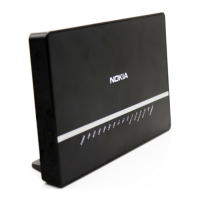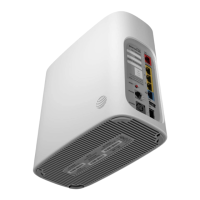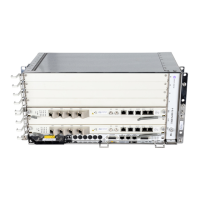Virtual Private LAN Service
176
FD 100/320Gbps NT and FX NT IHub Services Guide
3HH-11985-AAAA-TQZZA Issue: 13
Unknown destinations, broadcasts, and multicasts are flooded to all other SAPs in
the service. If SAPs are connected together, either through misconfiguration or for
redundancy purposes, loops can form and flooded packets can keep flowing through
the network. Nokia’s implementation of the Spanning Tree Protocol (xSTP) is
designed to remove these loops from the VPLS topology. This is done by putting one
or several SAPs in the discarding state.
5.4.7.1 Spanning Tree Operating Modes
A preferred STP variant can be configured for the m-VPLS. The following STP
variants supported on the ISAM.
• rstp
Rapid Spanning Tree Protocol (RSTP) compliant with IEEE 802.1D-2004 - default
mode.
• dot1w
Compliant with IEEE 802.1w.
• comp-dot1w
Operation as in RSTP but backwards compatible with IEEE 802.1w (this mode
was introduced for interoperability with some MTU types).
• mstp
Compliant with the Multiple Spanning Tree Protocol specified in IEEE
802.1Q-REV/D5.0-09/200.
• pmstp
Provider MSTP mode is implemented according to 802.1ad (provider bridges)
The provider functionality is implemented and the provider edge functionality is
not.
While the ISAM initially uses the mode configured for the m-VPLS, it will dynamically
fall back (on a per-SAP basis) to STP (IEEE 802.1D-1998) based on the detection of
a BPDU of a different format. A trap or log entry is generated for every change in
spanning tree variant.
• Some older 802.1W compliant RSTP implementations may have problems with
some of the features added in the 802.1D-2004 standard. Interworking with these
older systems is improved with the comp-dot1w mode. The differences between
the RSTP mode and the comp-dot1w mode are: the RSTP mode implements the
improved convergence over shared media feature, for example, RSTP will
transition from discarding to forwarding in 4 seconds when operating over shared
media. The comp-dot1w mode does not implement this 802.1D-2004
improvement and transitions conform to 802.1w in 30 seconds (both modes
implement fast convergence over point-to-point links).
• In the RSTP mode, the transmitted BPDUs contain the port's designated priority
vector (DPV) (conforms to 802.1D-2004). Older implementations may be
confused by the DPV in a BPDU and may fail to recognize an agreement BPDU

